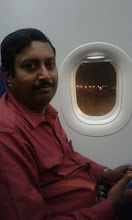November 14th…. Things that come to our mind –
CHILDRENS DAY - HOLIDAY
Other minor things that happened on
this day
- 1922 – The BBC begins radio service in the United Kingdom
- 1967 – American physicist Theodore Maiman is given a patent for his ruby laser systems, the world's first laser.
- 2001 – War in Afghanistan: Afghan Northern Alliance fighters take over the capital Kabul.
- 2003 – Astronomers Michael E. Brown, Chad Trujillo, and David L. Rabinowitz discover 90377 Sedna, a Trans-Neptunian object.
- 2008 – The first G-20 economic summit opens in Washington, D.C.
- 2010 – Germany's Sebastian Vettel of Red Bull Racing wins Formula One's Drivers Championship to become the sport's youngest champion.
- 2012 – Israel launches a major military operation in the Gaza Strip, as hostilities with Hamas escalate.
Finally
World Diabetes Day.. November 14th
Everybody talks about it. All Diabetes Centres use this opportunity
to advertise.
All leading Diabetologists give interviews in Harvard Engish…
Then comes November 15th..
Everything is forgotten till next year..
But this year Times of India had published an article on NON
INVASIVE GLUCOMETERS… yes!! Exactly!! You might not need blood or prick
yourself to find out the blood sugar values…
I am very excited about this article because I had written a
blogpost on NON INVASIVE GLUCOMETERS in February
2013
PAIN- FREE BLOOD SUGAR MONITORING
PAIN- FREE BLOOD SUGAR MONITORING
Here is the article from TOI for those of you who missed!!
Healthcare has advanced rapidly in the past few decades, but it is still impossible for patients to escape the needle. Studies show that up to 10% of the world’s population, especially diabetics, have an intense fear of needles and would go to any extent to avoid them. To put an end to this phobia, several novel non-invasive techniques have been developed to test blood sugar levels in diabetics.

Conventionally, diabetics check blood sugar levels by pricking their finger with a needle to take a drop of blood for testing. “Pricking your finger multiple times a day is painful, time consuming, and can cause calluses and sensitive fingers. It is difficult if the patient has visual limitations, As a result, many patients avoid or limit blood glucose monitoring.
Alternative methods like near infrared spectroscopy (NIR) can be used instead, say doctors. “NIR is still in the trial stages and determines glucose levels through the skin using varied light waves. Non-invasive devices that measure blood sugar levels include Glucotrack, which can be imported from abroad. It is a small sensor that is clipped to the earlobe and connected to a handheld control and display unit. It uses ultrasound, electromagnetic readings and thermal technology to obtain blood glucose readings,”
Mass screening devices have also been developed to test a large number of patients in clinics. The Government General Hospital uses a device called EZ Scan to screen patients. “Close to 1,000 patients come to the Institute of Diabetology in GH every day, so it is difficult to screen all of them personally. With the new machine, the patients have to place their hands and feet on electrodes and their height, weight and age is recorded. Based on the sweat secretion, the device gives the results within two minutes,” he said.
Machines can also determine blood glucose levels from the skin fluorescence, said head of Madras Diabetic Research Foundation Dr Mohan. “We use the SCOUT DS machine on which patients place their hands. Light from the machine enters the skin and scatters on the tissue. The sugar levels are read from the skin fluorescence,” he said.
Dr Mohan’s clinic also uses Diagnoptics AGE Reader, a noninvasive equipment that diagnoses the risk of diabetes and its cardiovascular, nephrological and neurological complications by measuring accumulation of advanced glycation endproducts. “These new methods are precise, reliable and save a lot of time. Above all, the patient is relieved from the prick of the needle,” he said.
Thank you TOI for this article.....
Although many machines mentioned are still in the experimental stages there is light at the end of the tunnel...
Dr.Riyaz Sheriff M.B.B.S.,PGDHS(Diab).,CMD
Although many machines mentioned are still in the experimental stages there is light at the end of the tunnel...
Dr.Riyaz Sheriff M.B.B.S.,PGDHS(Diab).,CMD


No comments:
Post a Comment
Feel free to Comment!!